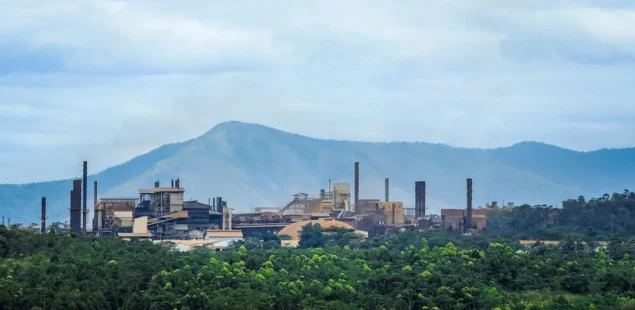
Cobalt remains a critical mineral, integral to industries including defense, aerospace, energy storage, consumer electronics, and electric vehicles (EVs). As demand for these applications grows, the global cobalt market faces a complex mix of opportunities and challenges heading toward 2030.
Global Production Trends
Cobalt is primarily mined as a by-product of copper and nickel. Global production surpassed 200 kilotonnes (kt) in 2023 and exceeded 300 kt in 2024. The number of cobalt-producing countries has more than doubled, rising from seven in 2000 to 16 in 2024, according to GlobalData.
The Democratic Republic of Congo (DRC) remains the dominant producer, accounting for over 80% of global output, followed by Indonesia at 6.7%. Indonesia’s production has surged over the past decade, climbing from 1.3 kt in 2015 to 20.4 kt in 2024. By contrast, Russia’s production has stagnated due to sanctions and trade restrictions stemming from its conflict in Ukraine. Australia and Canada are emerging as key players, with their combined global share projected to rise to 6% by 2030, driven by projects such as Australia’s Broken Hill Cobalt and Canada’s Copper Cliff mine.
Market Dynamics and Price Volatility
Oversupply from major producers like the DRC has placed downward pressure on cobalt prices, which have declined significantly from their 2018 peak of $81,900 per tonne. By 2024, prices reached multi-year lows, impacted by the shift toward lithium-iron-phosphate (LFP) batteries, which are considered more cost-effective and stable. Despite this, the mid-to-late 2020s are expected to bring a recovery in cobalt prices as demand growth eventually outpaces supply.
The cobalt market’s supply chain is also increasingly influenced by geopolitical factors. China’s dominance in cobalt mining and processing, particularly through its partnerships with the DRC, has positioned it at the center of the global supply chain. Meanwhile, U.S.-imposed tariffs on Chinese refined cobalt have intensified trade tensions, with potential consequences for manufacturing costs and supply chain stability.
Diversification of Supply Chains
In response to geopolitical risks, countries like Australia, Canada, and Indonesia are expanding their domestic production capacities. Indonesia, for instance, has invested heavily in high-pressure acid leach (HPAL) facilities to strengthen its position in the EV supply chain. Additionally, environmental, social, and governance (ESG) considerations are becoming critical to the industry. New EU regulations, such as the Critical Raw Materials Act (CRMA) effective May 2025, will require risk assessments and actions to address ESG issues across the supply chain.
Outlook to 2030
GlobalData forecasts global cobalt production to reach 410.9 kt by 2030, growing at a compound annual growth rate (CAGR) of 5.1%. Production from the DRC is expected to moderate, with a CAGR of 1.8%, while countries like Australia and Indonesia are positioned for faster growth.
As the energy transition accelerates, EVs are projected to surpass 60 million unit sales globally by 2030, further driving demand for cobalt. Beyond batteries, stable demand from aerospace and military applications will also contribute to cobalt’s long-term growth. However, the transition to cobalt-free batteries poses a potential threat, as alternatives mature and become commercially viable.
Challenges and Policy Implications
Investment in new mines, effective policies, and regulatory compliance will be critical to ensuring a robust and responsible cobalt supply chain. ESG issues, including environmental pollution and labor practices, remain significant challenges for the industry. Addressing these concerns will be key to unlocking cobalt’s full potential in supporting the global transition to net-zero emissions.



